Choosing the best small bathtub
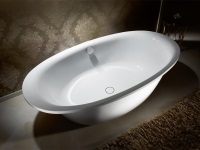
A small bathtub is just a godsend for those whose bathroom area does not allow to install a standard or larger size bathtub. There is no need to believe that its size will cause inconvenience in terms of use. It's all about the model that perfectly solves the problem of comfort and occupied space. This problem is 100% solved by the manufacturers, who will satisfy the demands of any fastidious customer. They offer such mini-models, which are not inferior, and sometimes even superior to their standard-sized counterparts.
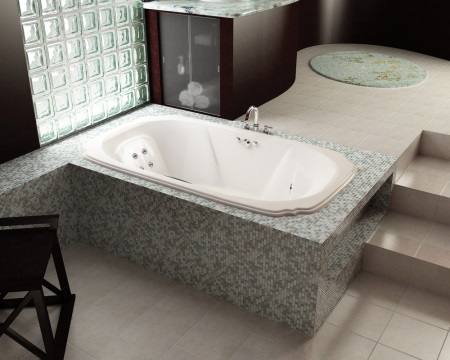
Application
To begin with, let's define the terminology: a bath, what size can be attributed to the parameter mini? There are no clear-cut sizes, but if we stick to the standard with a length of 150-170 cm, width of 70-75 cm, then everything that is less than that, can be attributed to the mini-bath.
Once upon a time, it was very problematic to find a non-standard bath. Now it is no longer a problem. You can buy a ready-made example or order it according to your own parameters.
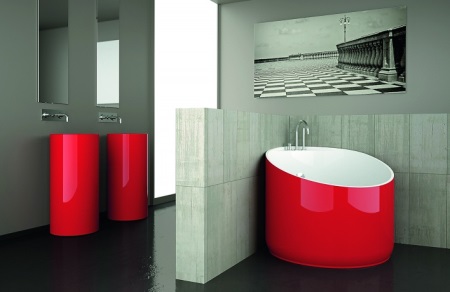
Sizes and shapes
Corner mini-bath is one of the most popular models. Agree, if the area of the bathroom is so small that there is simply not enough space to install both a shower and a bathtub, then a corner mini-bath is the only option. Of course, the supine position for this type of bath is available only for a child. Manufacturers offer mini-baths of various shapes: triangular, oval, quadrangular, with rounded edges, etc. There are even the most unusual forms of baths that are a special design development and are designed for a particular interior.
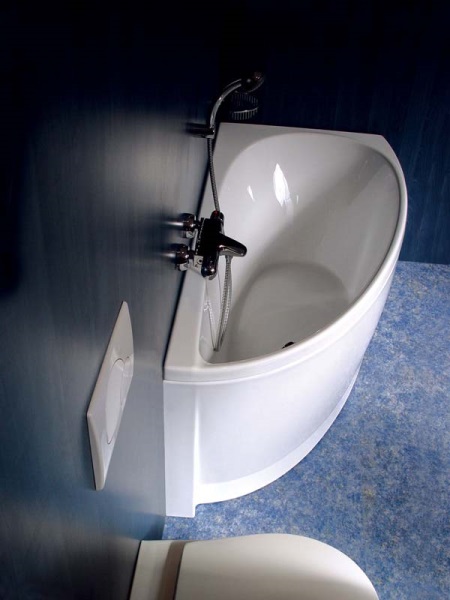
The form of the bathtub plays an important role in the bathroom interior. After all, you can choose a bathtub narrow, but long. Then the feeling of bathing in such a bath will be almost the same as in the bath of standard size. And it will take much less space. So you'll save already limited space. Or use it in a useful way to install, for example, a shelf or a cabinet for small items and bathroom accessories. Many manufacturers of mini-baths are designed for maximum comfort, so they can be at least in a half-lying position. And if it is a sitting mini-bath, it should also be comfortable.

Mini-bath in the form of a bowl - no less attractive model. During operation, the owner is convinced not only of its economy of occupied space, but also of its comfort. It is quite deep, so to dip into a sea of foam and relax - it is quite affordable pleasure that can deliver such a bath. In general, mini-baths usually have an irregular shape. Based on this, they can be classified into asymmetrical, deep and sitting. Experts say that the short and wide bathtub is considered the most comfortable. Corner bath completely satisfies these parameters.
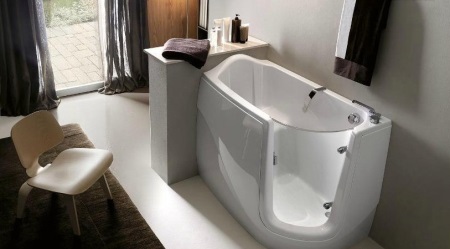
Materials of construction and technical equipment
One of the most important parameters, on the basis of which you should choose a bath, is the material of manufacture. It determines how long your mini-bath will be durable and of high quality. In the manufacture of baths use different materials.
Based on this, mini-bathtubs are:
- cast iron,
- steel,
- acrylic,
- a mixture of acrylic and polymer concrete.
Consider their advantages and disadvantages.
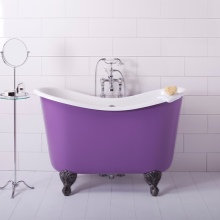
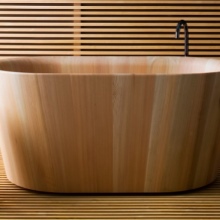
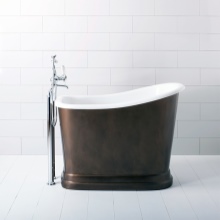
Cast iron .
This is the same age as our forebears. One of the very first materials used to produce bathtubs is cast iron. The material is strong and powerful. In the days of the so-called "stagnation" to find on sale a cast iron bath of unusual shapes and sizes was an impossible task.
Nowadays, manufacturers offer cast iron baths of all kinds of shapes and sizes, as well as colors.
The advantage of a bath made of this material:
- does not cool down quickly,
- It is easy to install and it lasts a long time,
- No problems with washing and cleaning.
Cons:
- very heavy,
- expensive.
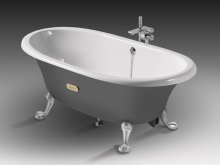
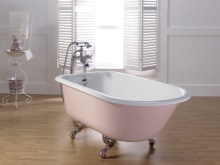
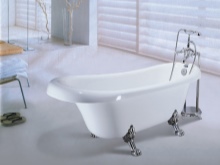
Steel
Steel is a reliable material, but it is difficult to handle in production conditions. To make the bath have a proper look, use a special enamel, which is applied as an external coating. Only then will the steel bath acquire a beautiful and pleasant appearance.
Steel bath has one drawback: The water cools down quite quickly, which is not very comfortable.
In terms of weight, of course, it is three times lighter than a bath of cast iron. In this regard, it is not difficult to install. Another plus is its cost. For a little money you get practicality and durability, which is not unimportant these days.
Acrylic
The most popular material with both those who manufacture and those who purchase - acrylic. Designers create bathtubs of the most unusual shapes and sizes, as acrylic is easy to work with.
Disadvantages of acrylic bathtubs:
- Expensive,
- instability.
Acrylic bathtub is very fragile, it can easily be "injured" by some heavy object.
Despite this, it has many advantages:
- durability, as the material is wear-resistant.
- low weight, which is very convenient for its installation and assembly.
- It retains heat well (about as well as cast iron).
So, filling such a bathtub with water, you will enjoy warmth and comfort for a long time. Statistics say that 6 out of 10 buyers prefer acrylic corner bath. Moreover, it fits any design.
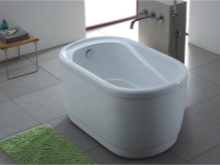
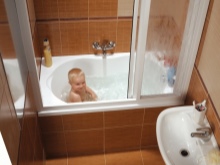
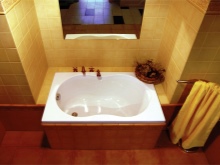
A mixture of polymer concrete and acrylic
The symbiosis of these two components gives a wide field for the realization of the most diverse design solutions. The form of such a bath can resemble a drop, a fan, a petal and much more. An interesting texture in the form of natural stone looks attractive and beckons customers. But the pleasure is expensive.
When choosing a small bath add a hydro massage.
Their installation requires a number of components, ranging from a hydraulic pump, a system of pipes and nozzles to a compressor and a remote control (electronic or pneumatic), which regulates the water flow. It is advisable to use cascade mixers. Then the water in the bath will be filled much faster.
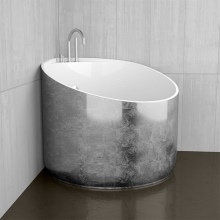
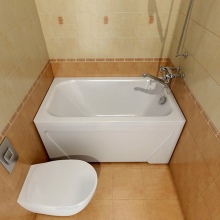
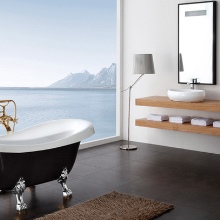
Tips for choosing
When you choose a bath, pay attention to the following points:
- The size of the tub. If your apartment is most common, let's say typical, then the bath, the size of 150 cm will fit perfectly in any place in the room.
- Carefully inspect your future purchase, so that there were no unpleasant surprises during installation (scratches, chips or any other defects);
- Be sure to check the operation of the legs, which regulate the height of the bathtub;
- Find out what material the tub is made of. This is a very important point, because it affects the price, maintaining the temperature of the poured water, practicality, installation.
- Pay attention to safety: whether the bath has handles and grooved bottom.
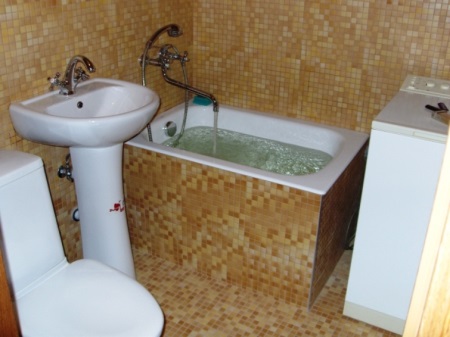
Seated
Seated bathtub - is a very popular model these days. It is compact and versatile. It can be both angular and regular shaped. Such a bathtub often has a seat.
The sizes of sitting baths are very diverse. So everyone can choose exactly what suits his or her bathroom. The advantage of these baths is also the economical water consumption.
In the cities of our country there is a large number of so-called "Khrushchev". For such small apartments, a sitting bath will be a great solution. The form of the sitting bath can be chosen as the soul desires.
Manufacturers offer a wide choice. When choosing, do not forget the tips we shared with you in the sections above.
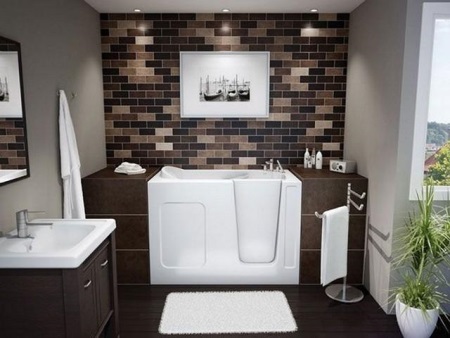
Installation with your own hands
You can install the bathtub by calling specialists, but on your own it is also quite a feasible task. The first stage of the work is to measure the corner bathtub. We use a tape measure. The corner of the wall where the bathtub will be installed must be cleaned. The walls must be cleaned and leveled with putty. It is necessary to adhere to the wall angle of 90°, because one of the corners of the mini-bath is also 90°. These parameters must be respected. Use a construction angle.
You can install the bathtub in two ways:
- Prepare the base and already put the tub on its feet.
- Then install the bathtub on the fixtures, and then on the feet.
After that, align the bathtub using a level. Fix the length from the floor to the very bottom of the tub.
Then lay the base for the future bath:
- Construct a pedestal of bricks. Its height should be slightly less than the measurements made above.
- As a binding element, we take cement. About twelve hours we will need to dry the base.Be sure to check if our sewer does not leak. Eliminate problems, if any.
- If the bathtub has additional fasteners on the adjacent walls, then make holes for them. You can't do without a hole punch here.
- The joints between the walls and the plumbing need a skirting board to avoid leaks.
- Brick pedestal can be given an aesthetic appearance by decorating it with facing material. Do not damage your bathtub during installation. Be careful!
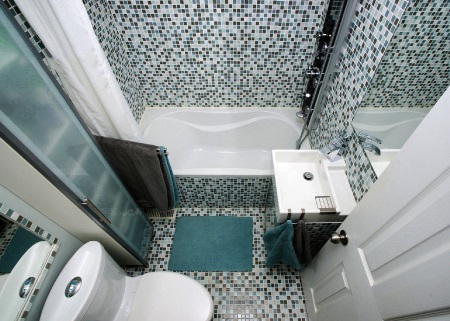
And in conclusion, a few tips for furnishing the interior with a mini-bathtub. Do not use large items in your bathroom. Purchase cabinets and shelves on the walls transparent. This is both stylish and visually lightens the interior.
Doors, partitions should also be light and translucent. Do not install a huge and flashy sink. It will not look against the background of the mini-bath. Better, something with strict forms. So do not despair if your bathroom has small dimensions. Use our tips and turn it into a nice and cozy corner.





In our tiny bathroom will fit only a small bathtub. I do not want a shower - it is necessary to soak in the bathtub after a hard day. I liked the red round one) But we'll install it for ourselves about as on the last photo.